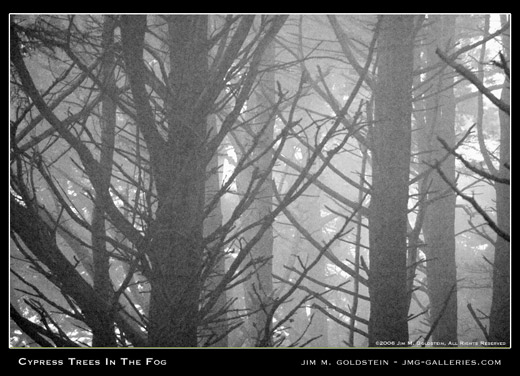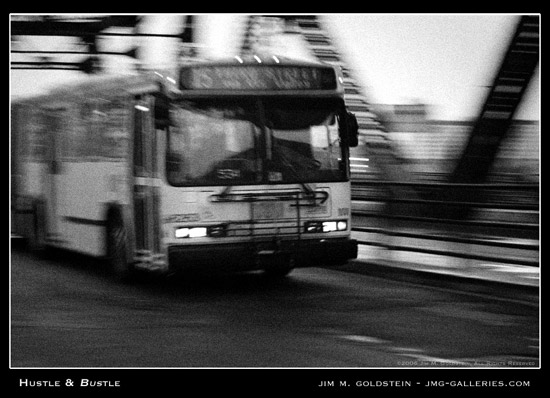One of the most noteworthy developments in photography since the introduction of digital photography has been low if not noise and grain free images. As digital photography has proliferated and become the norm more and more people have become accustomed to this type of file output. Strangely it wasn’t that long ago that few people noticed this component of film photography.
How the times have changed. Photographers are now quick to complain when they see an image with noise or grain. Some stock agencies now go so far as to flatly refuse acceptance of film submissions of contemporary subjects (excluding fine art or vintage images) because of grain. Gallery curators have even been known to use the lack of noise or grain in an image to exclude digital photographers from displaying their work. Noise and grain have quickly become a determining factor by which viewers judge the quality of an image.
So there you have it the current snapshot of the photography world wrapped up in a few short sentences. Photographers and photo editors seem to now despise the presence of noise or grain, while some members of the art community turn away overtly digital (noise/grain free) images.

I have to admit there are a few modern photography mantras that bother me and the perpetual harping on noise and grain is one of them. Perhaps I’m biased as I started out in photography when film was the norm and grain could be minimized but was always present. In many regards grain was part of the aesthetic particularly with black and white film.
Don’t get me wrong. There is a time and place for noise or grain. I’m not one to blindly pine for the old days and blast digital photography. Quite the contrary in many of my images I do try to avoid the inclusion of noise and grain, but some of my images have it included for stylistic purposes.
I think it’s fair to say the digital age has afforded photographers a lot of great technologies and resulting equipment in which to craft ones vision. Out of this technological revolution photographers have become tech-heads and even snobs getting lost in the technical stats of each product. The result of that mentality is the nearly blind obsession to produce noise free photographs. Noise free photographs are great, but the result of the obsession on this component of the tools we use has resulted in the complete lack of appreciation for its aesthetic. The result is the current mainstream view that all noise and grain is bad.

In the 1980’s one of the hottest debates amongst audiophiles was whether the hiss free sound of digital recording/playback was better than the hiss filled or “warm” sound of analog recording/playback. In many regards there is a striking parallel between the acceptance of digital technology in music and photography. The cleaner digital output, a selling point of manufacturers, easily won over the majority of people whether new to the medium of music or of intermediate experience with it. While those a little more serious about music recording or with extended knowledge tended to debate the merit of the marketed improvement. In those days I remember the steps I’d take to minimize hiss in my recordings. Reading articles, buying equipment with the latest noise reduction, etc. It was novel to be able to clearly isolate the sound of my favorite artist. Similarly the majority of photographers and viewers enjoy the novel component of isolating the visual subject from the noise and grain.
Oddly nearly 20 years after the introduction of digital audio recording many of the music engineered today include noise artifacts to provide style or qualities that distinguish the music from other artists. I’ve not heard a debate on “warm” versus “digital” sounding music in years. Audio enthusiasts have learned to respect the range of sound that can be applied in the recording process. Will it take 20 years for photography enthusiasts to make an equivalent leap of understanding? I hope not.
Noise and grain do not make an image better or worse by default. Noise and grain when consciously applied to a photograph can be a component of the photographers’ vision just as depth of field or shutter speed. I look forward to the day that photography pundits move beyond the bashing of noise and grain and instead embrace it as another artistic dimension.
[tags]film, digital, photography, noise, digital noise, grain, film grain, trend, style, art, photographer, analog, philosophy[/tags]

I have shot quite a bit of high ISO digital stuff and personally I like the grain because it makes the image feel a bit edgier and less produced / slick. I remove the color noise but leave the luminance noise in generally.
I find that it’s typically the non-photographer camera owner or someone who doesn’t embrace new ideas easily, that always bashes digital in favor of film or whatever. people who have only seen bad chromatic aberation jobs from P&S cameras assume that all digital is bad. everyone is entitled to their own opinion, but at least try to have an informed opinion. If film is better than digital, why? Is it really? How so? I suspect that they would be hard-pressed to come up with an answer of substance. sometimes grain is good, sometimes it isn’t. depends on the situation. there is no blanket answer as to what is better or worse. It’s all about using the right tools for the job, whatever that might be.
Pingback: The Dirtiest Words in Photography: Noise and Grain at Imaging Insider
It’s all about prejudice, really. Stock agencies assume that photographers haven’t done their job if there’s grain in a photo, because the predominant images in everyone’s stock portfolios are all crisp, vivid, and noise-free. Art galleries still have a lot of disdain for digital photographers, and so naturally they gravitate toward those who shoot on film, which is grainy by default.
Personally, I don’t care whether images are noisy or not — unless they’re horribly noisy — if they’re good. I sometimes accentuate the noise in my photos on purpose, because I think it makes things more interesting. Take this photo for example. I think the very grainy look actually makes it. I certainly wouldn’t like it without the grain.
Wow, it almost sounds like you read a thread at DPReview where I posted a couple of messages over the past day or two.
I have a thought experiment I like to use when people (those galleries, in your post) exclude photographs on the basis of the processes used to create them. Imagine that in the early 1800s both analog/film and digital photography technologies had somehow both become simultaneously available. Does anyone actually believe that, faced with a choice, early practitioners would actually have chosen film over digital?
My view is that great art (great technical work) can be done using a variety of approaches, digital or analog. Trying to determine the relative value of a work on the basis of which technologies (and film is just as much a technology as digital) is no more useful than arguing about whether painting or sculpture is better.
Dan
Pingback: photographyVoter.com
the problem with this is that noise can always be *added*, but if a photo is noisy, it’s hard to get rid of it.
I totally support the idea of using grain/noise for artistic effect, but I’d still like to have a clean ISO6400 – and then add the grain at my own discretion
same thing with b/w color- I love doing b/w photography, but I’m not going to trade my dslr for a (theoretical) dslr that only did b/w – why? b/c having options is a *good* thing. converting a color image to b/w provies a huge amount of creative contol, includng “filters”, toning, etc…
why would I want to eschew that?
my point is that if you have a camera that does noise free high iso, you can have clean OR grainy images at your choice – if your camera is noisy, and you want a clean high iso image you are out of luck.
having more options is always a good thing
What a timely post! and nice pictures. What a coincidence, for the past two days I have been posting some of my “grainy” photos
Twins portrait and Pictorialist soldier on my blog after reading the blurry pictures post at The Online Photographer.
One of the little quirks I’ve noticed about digital is the inability to have decent grain/noise in colour images. As you mentioned, it’s much more common in black and white, but colour noise and grain still added to photos in the film days.
With digital, because of the way the sensors work, it results in really unattractive digital noise. It shows up only as red, green, or blue pixels, which looks obvious and tacky. On film, it’s a very different, subtler type of grain that’s more aesthetically pleasing.
There are times where I will shoot a certain image at a high ISO for the grain, and there are even some of us who will often use some over sharpening for the grainy look that we want.
Not many like it, … but I have found that some absolutely love it in a large print.
http://macroartinnature.wordpress.com/2007/01/17/over-sharpening-images-for-effects/
Good write up Jim!
I personally don’t have anything against grain (when used appropriately). By reading into that comment you can tell I see it as a creative aspect that can be added or removed from an image (guess I’m fully brainwashed now…as I can add it with photoshop or remove it with noise ninja.)
Funny coincidence is I was working on an image tonight that I thought looked much better in BW with noticeable grain (http://www.latoga.com/gallery/2597691#164821221). I think this is a perfect example of when it works…
Great thoughts as always Jim!
Good post Jim. I am so sick of reading about how we must have noiseless ISOs of 3200, 6400, etc, etc. Sure, it would be a nice thing to have, but so many are fixated on it that any camera or image that doesn’t have it, falls short of expectations. On a related note, I actually add grain to most of my large prints made from digital originals. I think it makes them look more realistic, and also increases perceived sharpness.